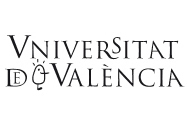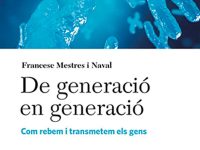REFERÈNCIES
Ball, P. (2013). DNA: Celebrate the unknowns. Nature, 496, 419–420. doi: 10.1038/496419a
Davis, B. D. (1990). The human genome and other initiatives. Science, 249, 342–343.
Doolittle, W. F., & Sapienza, C. (1980). Selfish genes, the phenotype paradigm and genome evolution. Nature, 284, 601–603. doi: 10.1038/ 284601a0
Gibbs, W. W. (2003). The unseen genome: Gems among the junk. Scientific American, 289, 46–53. doi: 10.1038/scientificamerican1103-46
Keller, E. F. (2000). The century of the gene. Cambridge, MA: Harvard University Press.
Keller, E. F. (2014). From gene action to reactive genomes. The Journal of Physiology, 592(11), 2423–2429. doi: 10.1113/jphysiol.2014.290991
Mattick, J. S. (2004). RNA regulation: A new genetics? Nature Reviews Genetics, 5, 316–323. doi: 10.1038/nrg1321
Mattick, J. S. (2010). RNA as the substrate for epigenome-environment interactions: RNA guidance of epigenetic processes and the expansion of RNA editing in animals underpins development, phenotypic plasticity, learning, and cognition. Bioessay, 32, 548–552. doi: 10.1002/bies.201000028
Ohno, S. (1972). So much “junk” DNA in our genome. Brookhaven Symposium in Biology, 23, 336–370.
Orgel, L. E., & Crick, F. H. (1980). Selfish DNA: the ultimate parasite. Nature, 284(5757): 604–607. doi: 10.1038/284604a0
Oxford English Dictionary. (s. f.) Code. En McPherson, F. (Ed.), Oxford English Dictionary Online. Consultat en http://www.oed.com/view/Entry/35578?rskey=ppAXGm&result=1#eid
Schrödinger, E. (1944). What is life? Cambridge: Cambridge University Press.
The ENCODE Project Consortium. (2007). Identification and analysis of functional elements in 1% of the human genome by the ENCODE pilot project. Nature, 447, 799–816. doi: 10.1038/nature05874
The International HapMap Consortium. (2003). The International HapMap Project. Nature, 426, 789–796.
The International HapMap Consortium. (2004). Integrating ethics and science in the International HapMap Project. Nature Reviews Genetics, 5, 467–475. doi: 10.1038/nrg1351
Weinberg, R. A. (1991). The human genome initiative. There are two large questions. The FASEB Journal, 5, 78.





